1. AWS Side of the VPN Tunnel
How to configure the AWS side of your VPN tunnel between AWS and Orka.
Quick navigation
You are here in the workflow: AWS-Orka Connections | 1. AWS Side of the VPN Tunnel | 2. VPN Tunnel Configuration File | 3. Orka Side of the VPN Tunnel | 4. Verifying the VPN Tunnel | VPN Tunnel Troubleshooting
On this page, jump to: Step 1: Log in to your VPC service | Step 2: Create a customer gateway | Step 3: Set up a virtual private gateway | Step 4: Create the tunnel | Step 5: Ensure that AWS allows inbound traffic
You need:
- The IP address for the
FW1-Outsidenetwork from your IP Plan.- The CIDR notation for the
Private-1network from your IP Plan. Most likely:10.221.188.0/24.
To establish a stable, persistent connection between an Amazon Virtual Private Cloud (Amazon VPC) and your Orka cluster, you need to configure an IPsec site-to-site VPN (VPN tunnel) between the two.
Routing from Amazon to Orka is static.
Step 1: Log in to your VPC service
- Log in to your AWS Management Console and access your VPC service. In the top right corner of the screen, make sure that you're working in the correct region.
- In the Find Services bar, type
VPCand navigate to the service.
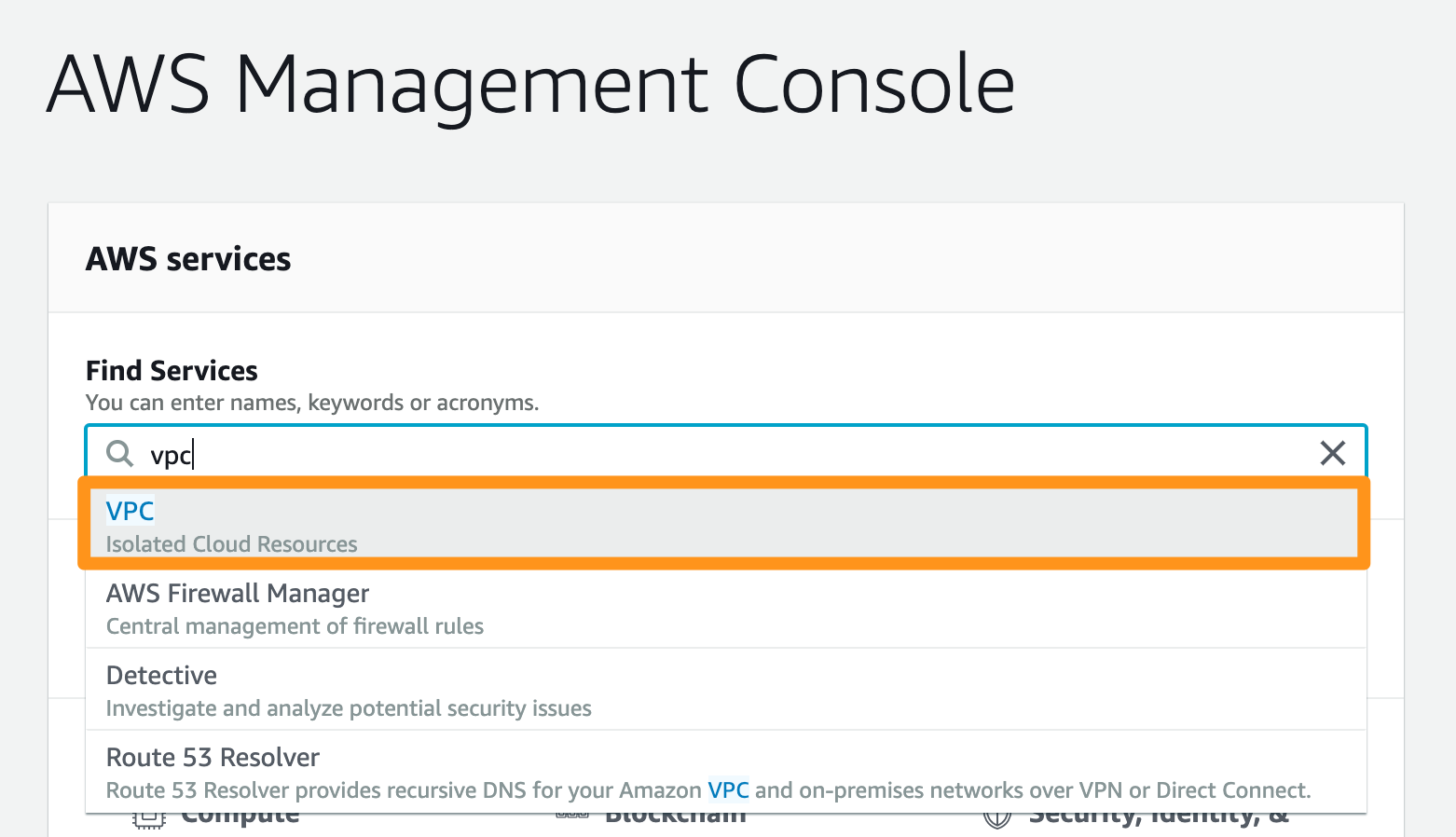
Step 2: Create a customer gateway
In Amazon, the customer gateway represents the Orka end of the tunnel.
- In the VPC service sidebar, locate the Virtual Private Network menu and select Customer Gateways.
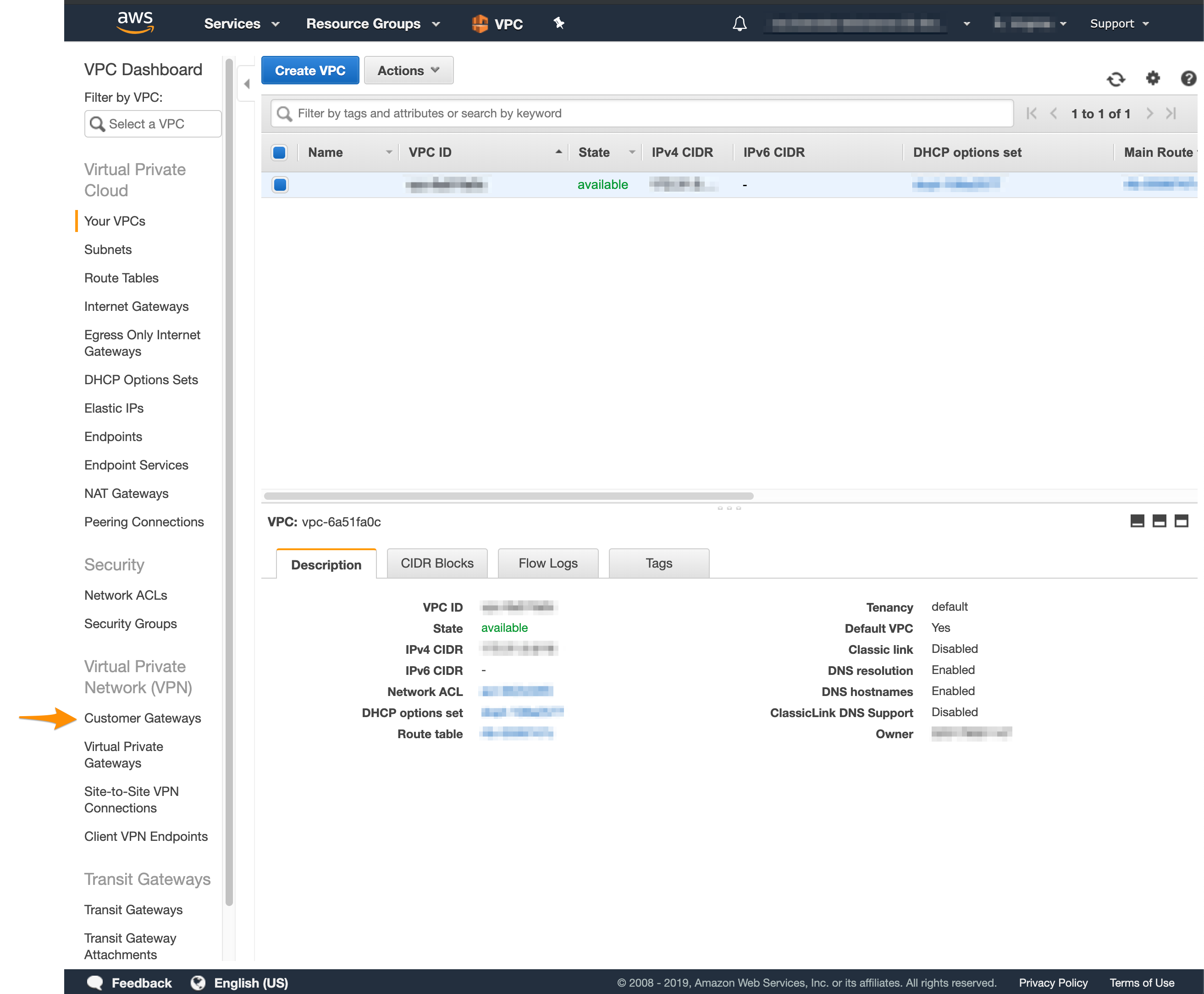
- Click Create Customer Gateway.
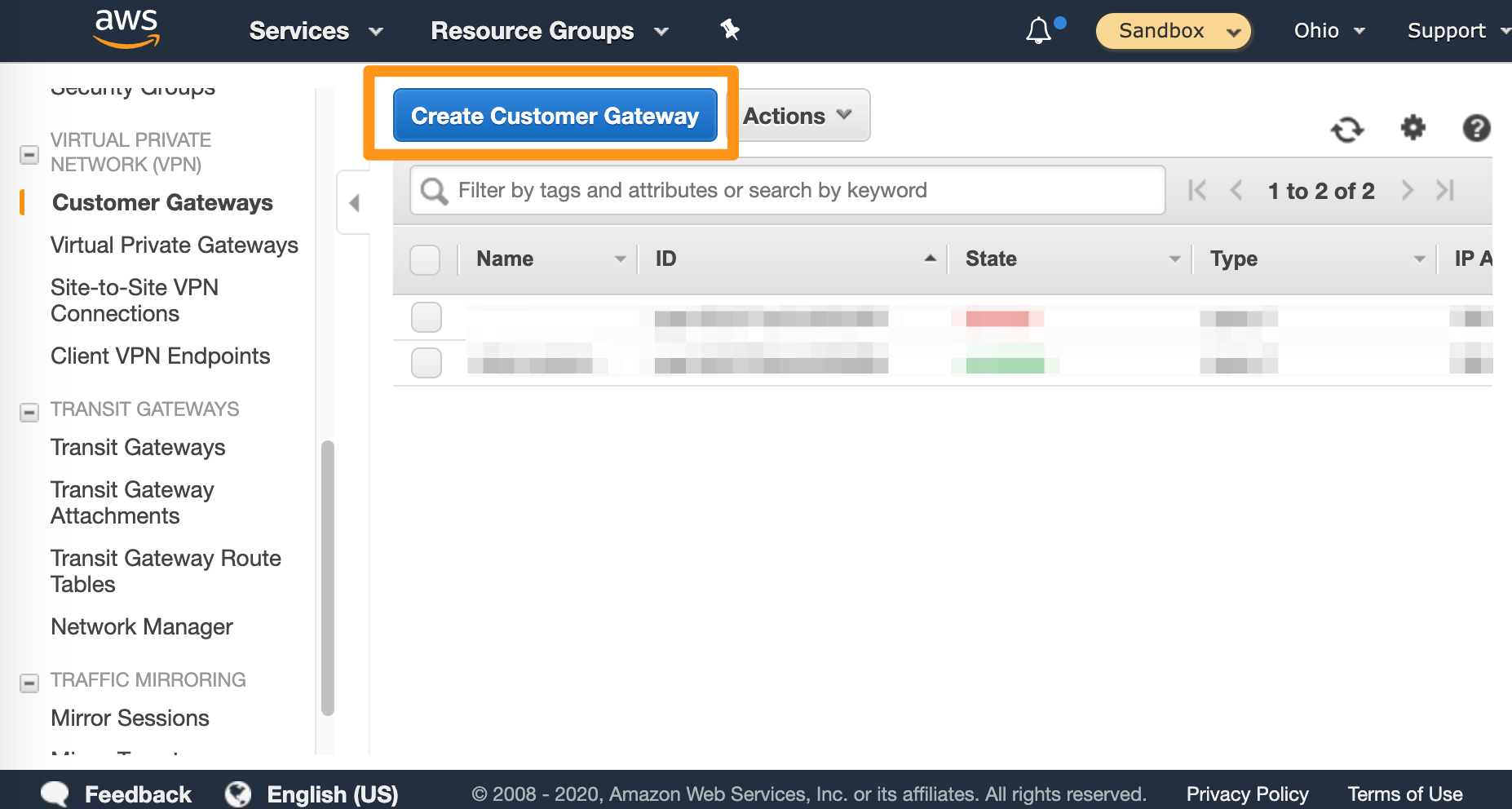
- Fill in the form.
- Provide a Name. Set a name that helps you identify the gateway easily.
- Select Static routing.
- In the IP Address text box, provide the IP address for the
FW1-Outsidenetwork from your IP Plan. - Ignore the remaining settings.
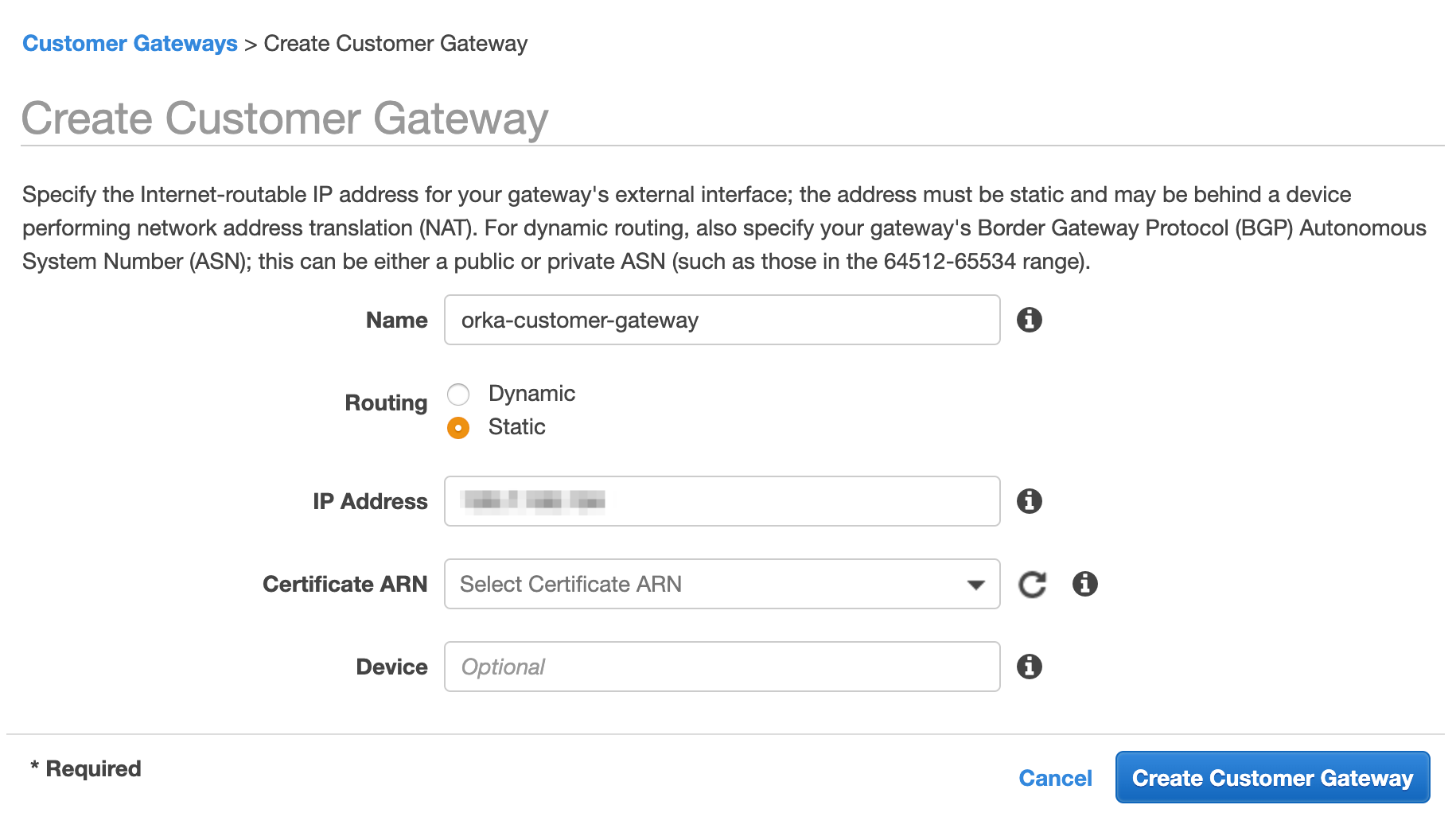
- Click Create Customer Gateway.

Step 3: Set up a virtual private gateway
In Amazon, the virtual private gateway represents the Amazon end of the tunnel.
- In the VPC service sidebar, locate the Virtual Private Network menu and select Virtual Private Gateways.
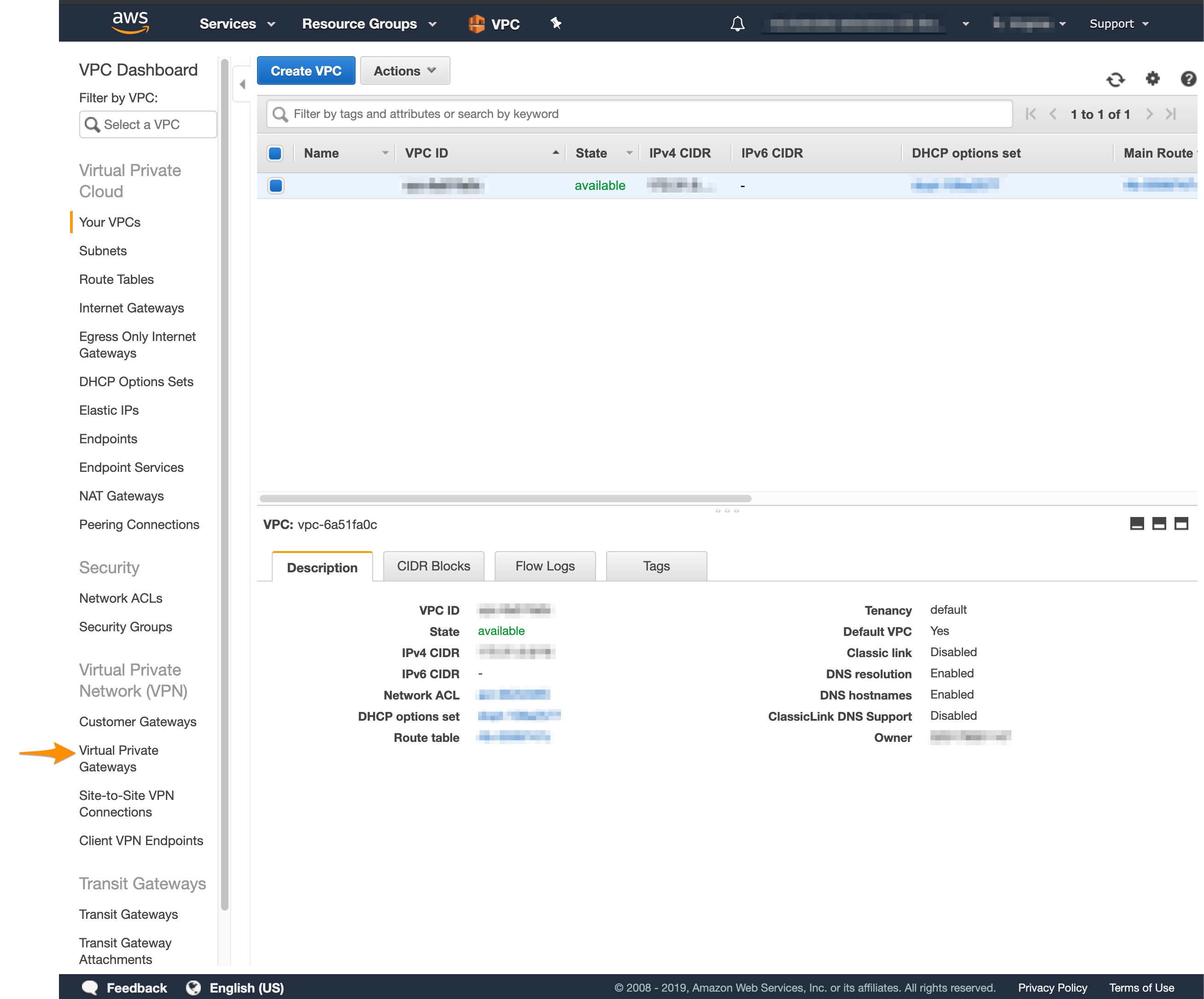
- Click Create Virtual Private Gateway.
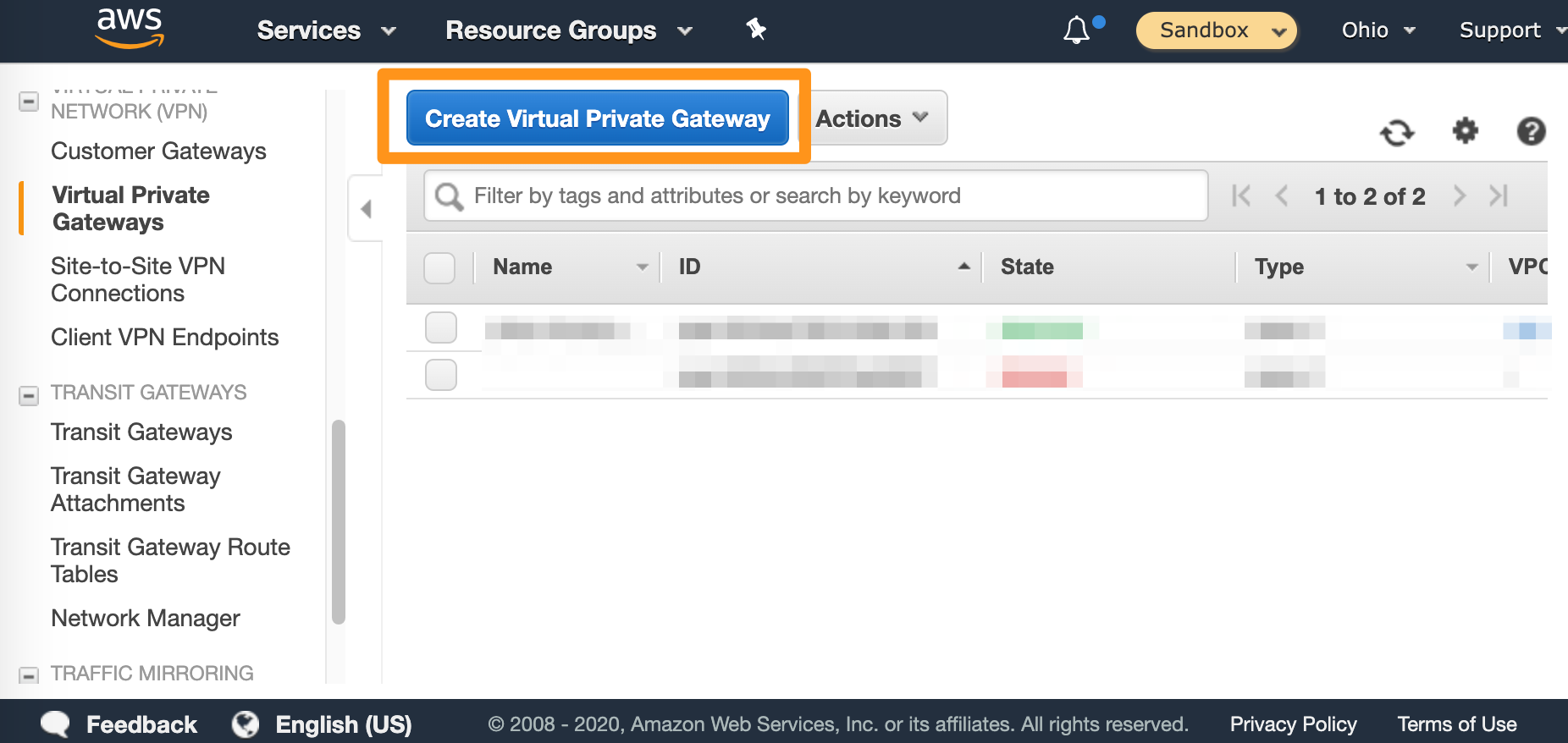
- Fill in the form.
- Provide a Name tag. Set a name that helps you identify the gateway easily.
- Select Amazon default ASN
- Click Create Virtual Private Gateway.
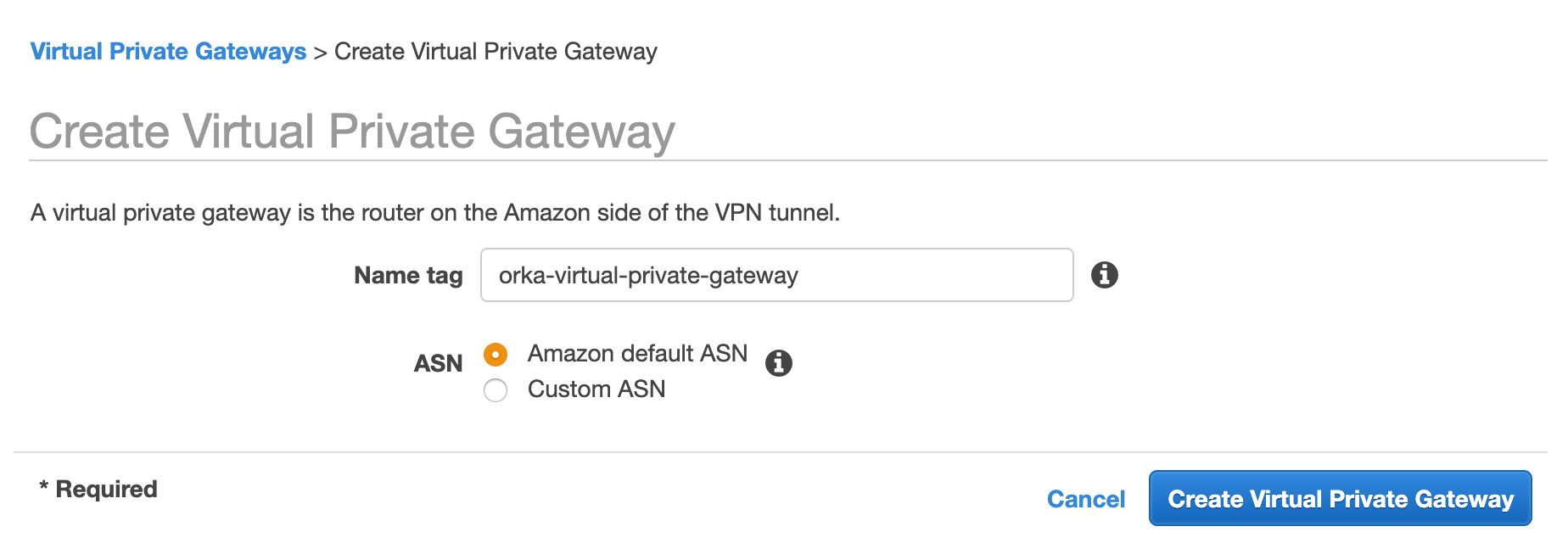
- On the Virtual Private Gаteways dashboard, right-click the newly created virtual private gateway and select Attach to VPC.

- Select your VPC from the drop-down menu and click Yes, Attach.
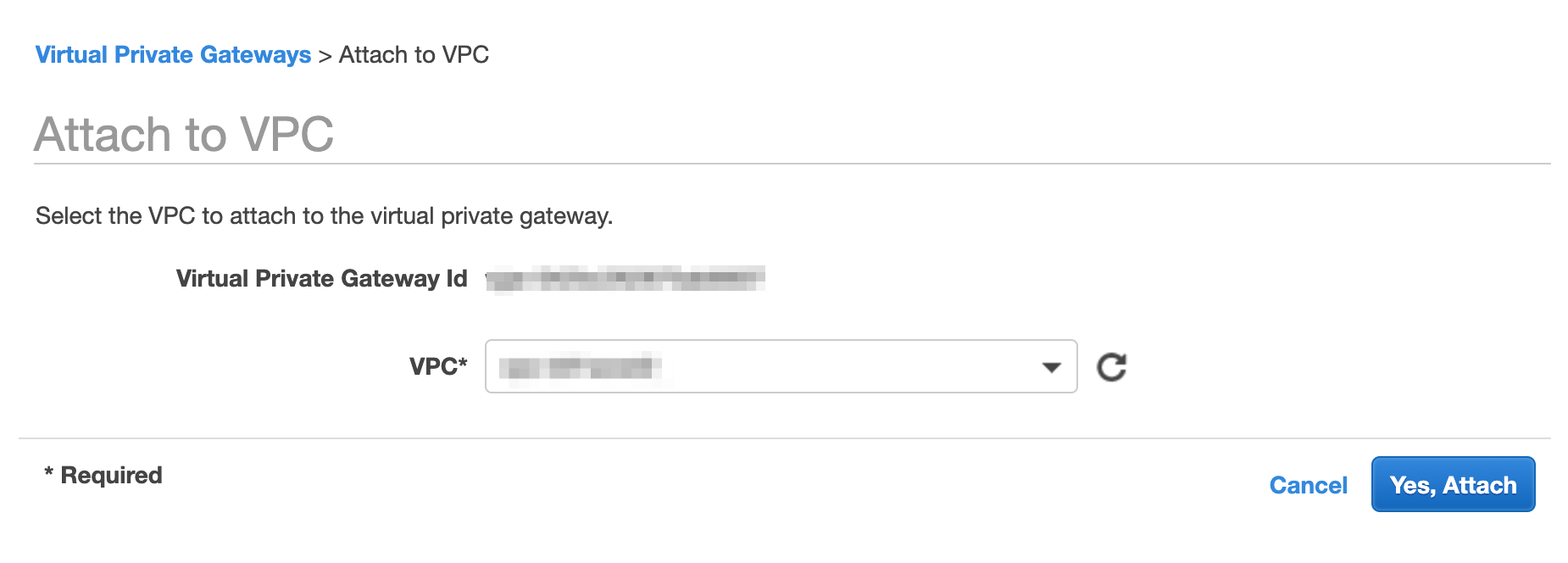
Next, you need to manually enable route propagation for the virtual private gateway.
- In the VPC service sidebar, locate the Virtual Private Cloud menu and select Route Tables.

- In the list of routing tables, select the main route table for your VPC.
- At the bottom of the screen, select Route Propagation. If your virtual private gateway is not listed, make sure that it's attached to the VPC.
- Click Edit route propagation.
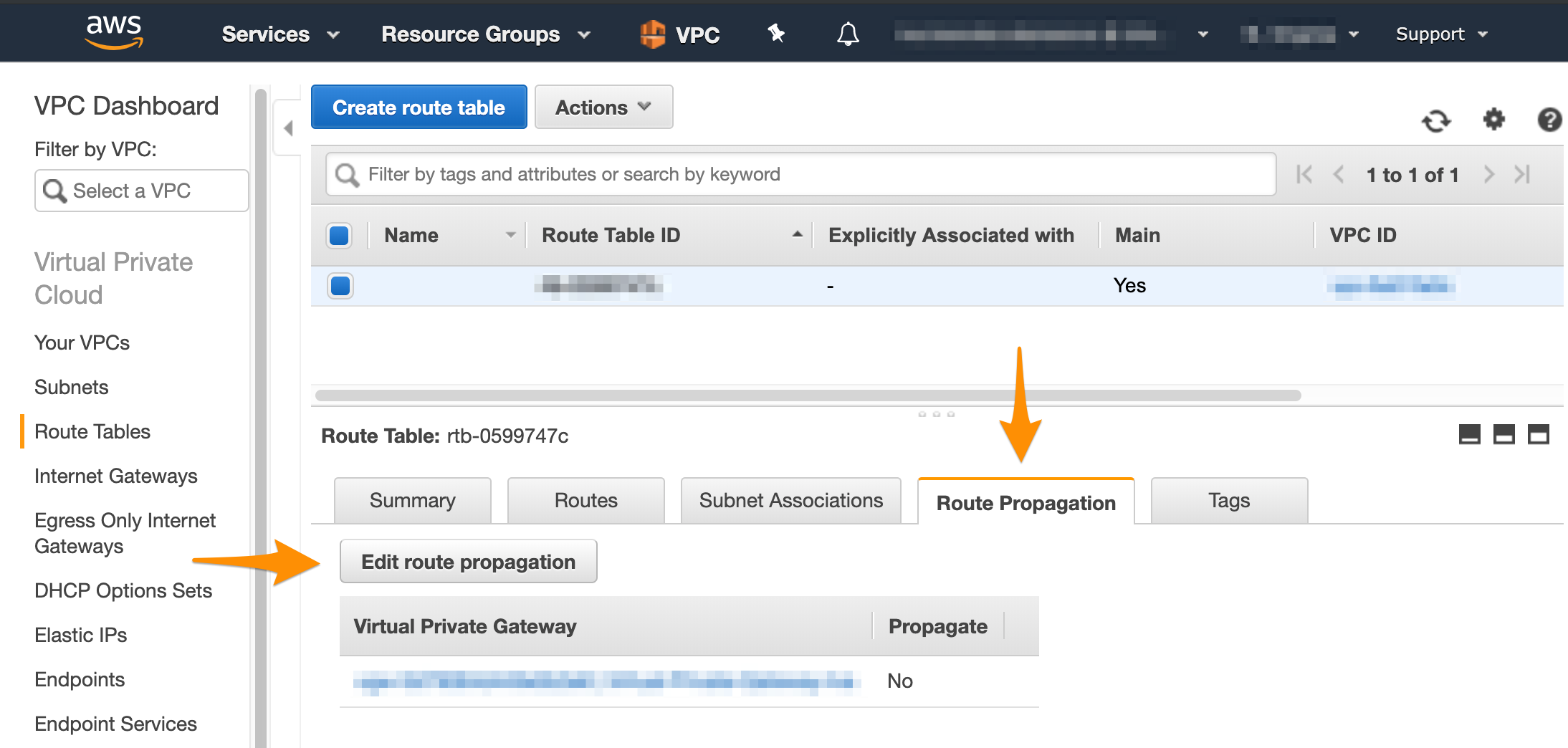
- Select the Propagate checkbox and click Save.
Step 4: Create the tunnel
After you have a customer gateway and a virtual private gateway in place, you can configure the tunnel.
- In the VPC service sidebar, locate the Virtual Private Network menu and select Site-to-Site VPN Connections.
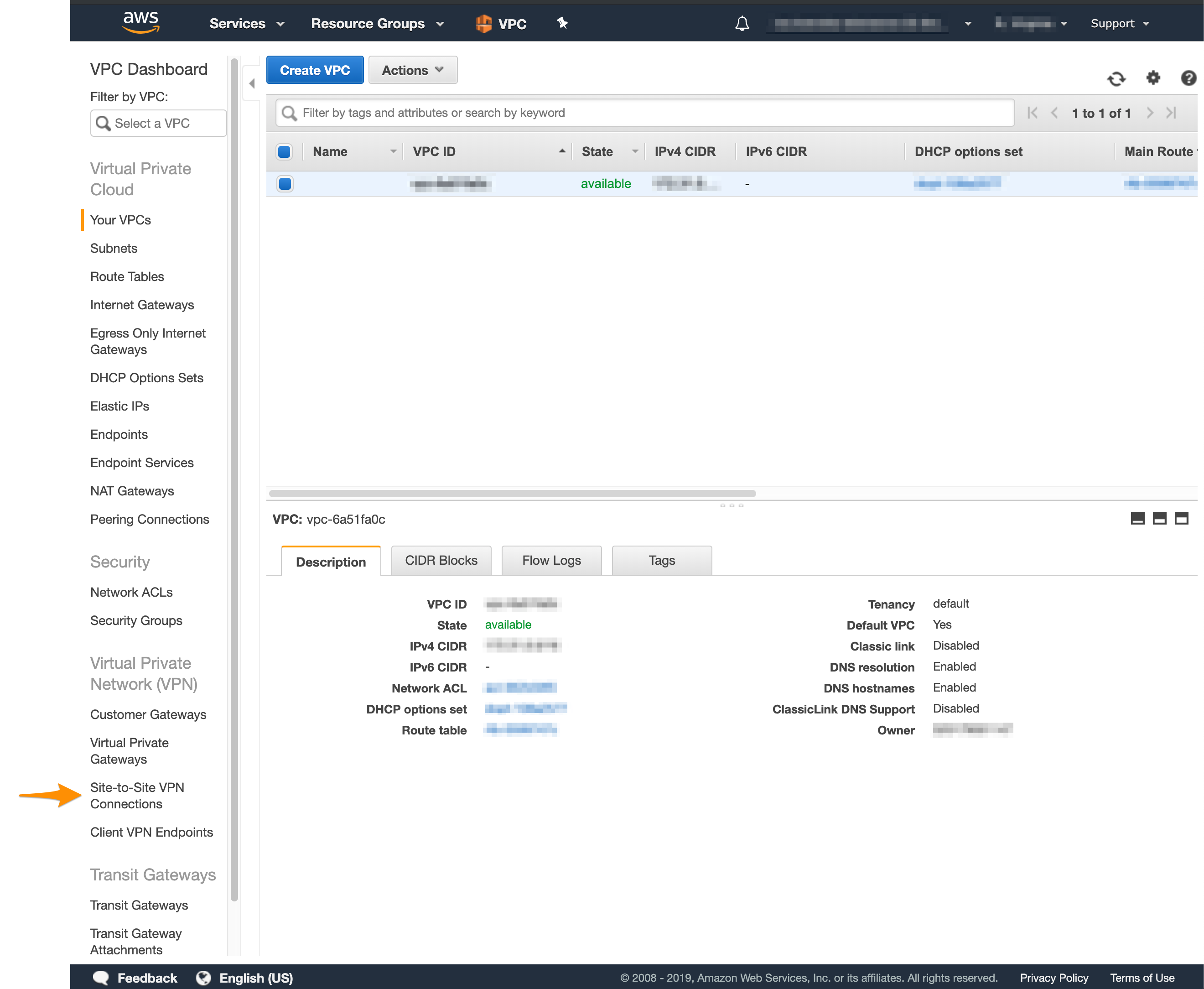
- Click Create VPN Connection.
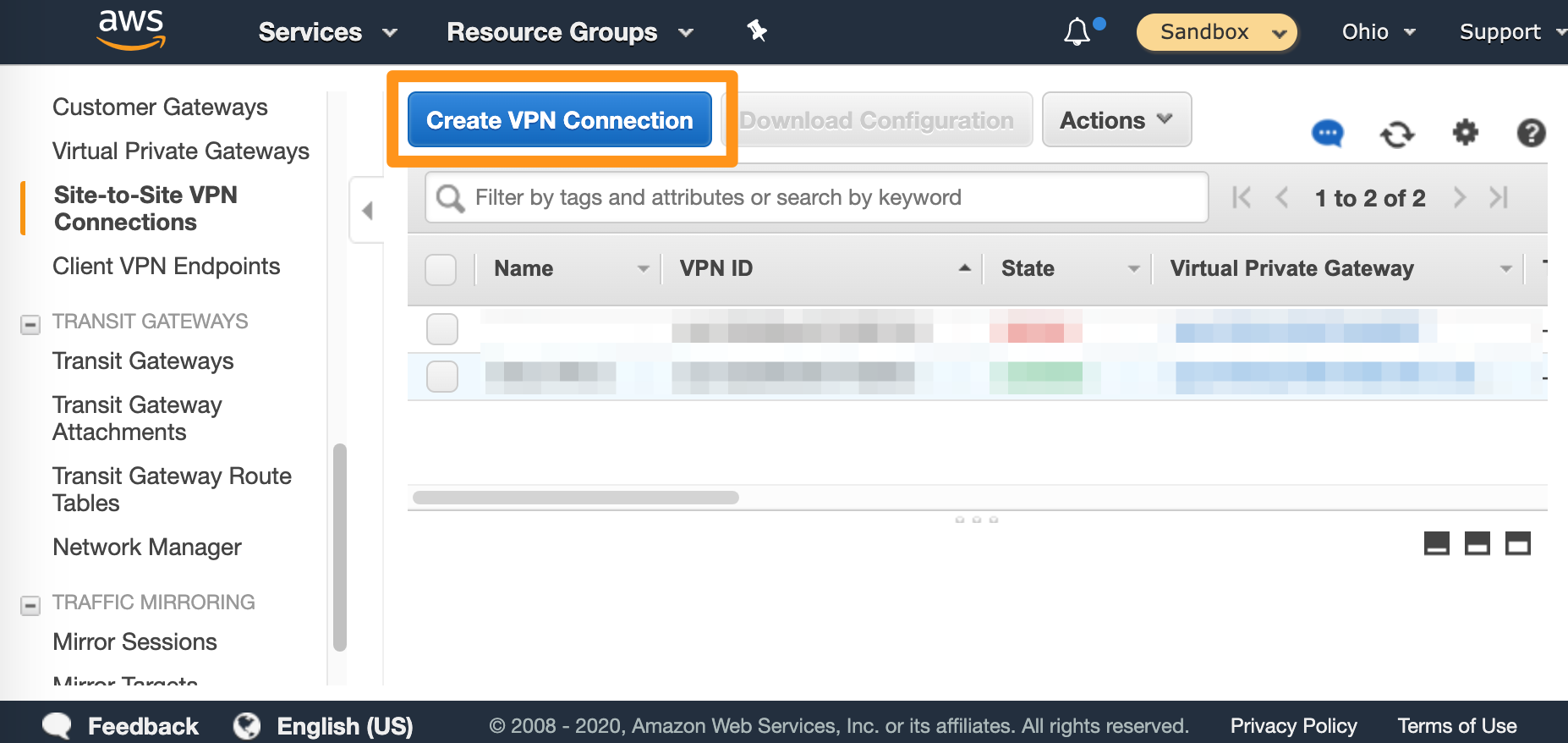
- Fill in the form.
- Provide Name tag.
- For Target Gateway Type, select Virtual Private Gateway, and from the Virtual Private Gateway drop-down menu, select the virtual private gateway you created earlier.
- Select that you want to use an Existing customer gateway, and from the Customer Gateway ID drop-down menu, select the customer gateway that you created earlier.
- For Routing Options, select Static.
- In Static IP Prefixes, provide the CIDR notation for your
Private-1network. Most likely:10.221.188.0/24. - Ignore the remaining options (not shown on the screenshot).
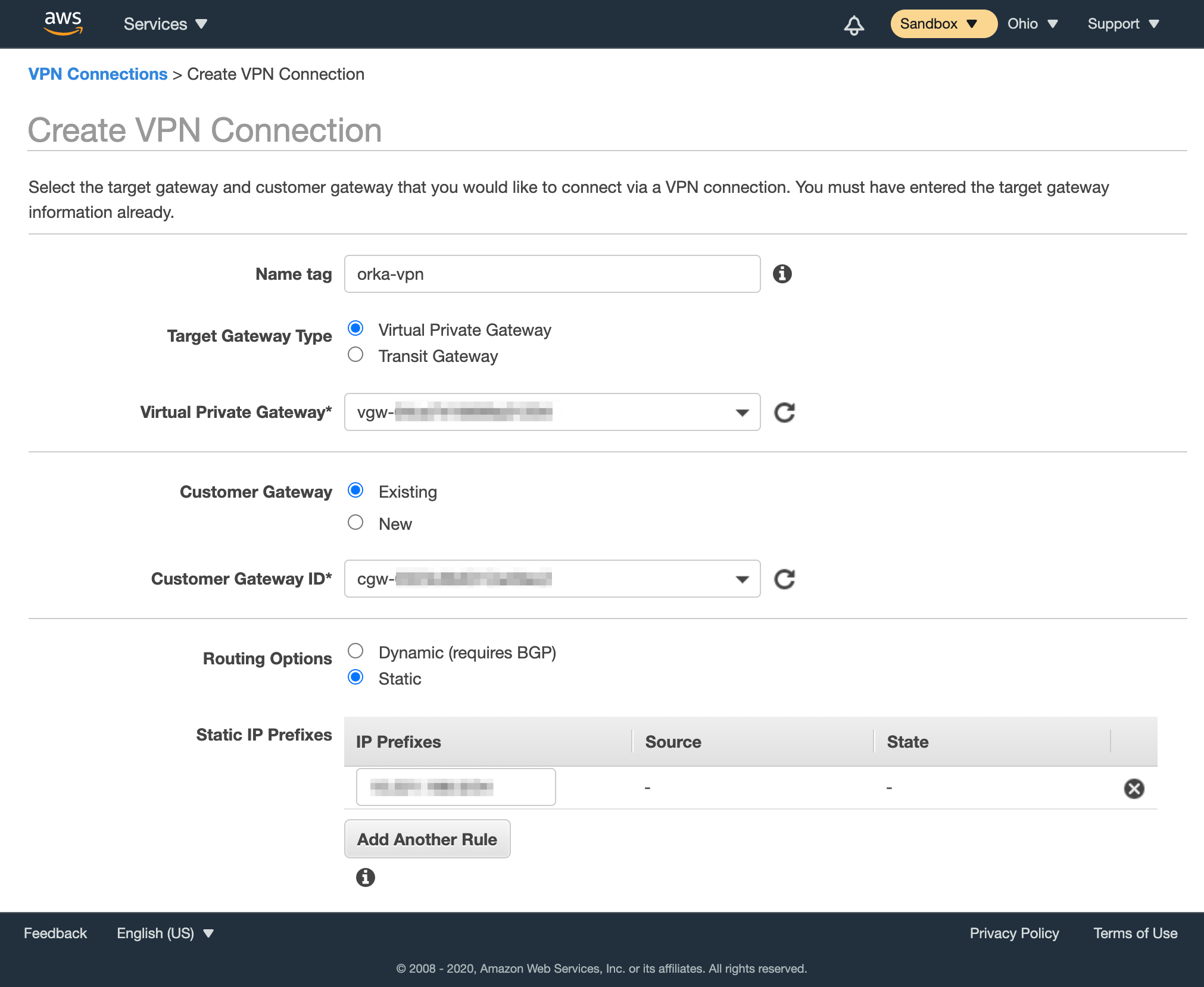
- Click Create VPN Connection.

Step 5: Ensure that AWS allows inbound traffic
Based on your requirements and current setup, you might need to enable inbound traffic from Orka to AWS.
See Amazon VPC Documentation: Security Groups for Your VPC and Amazon VPC Documentation: Network ACLs.
What's next
Updated over 3 years ago
